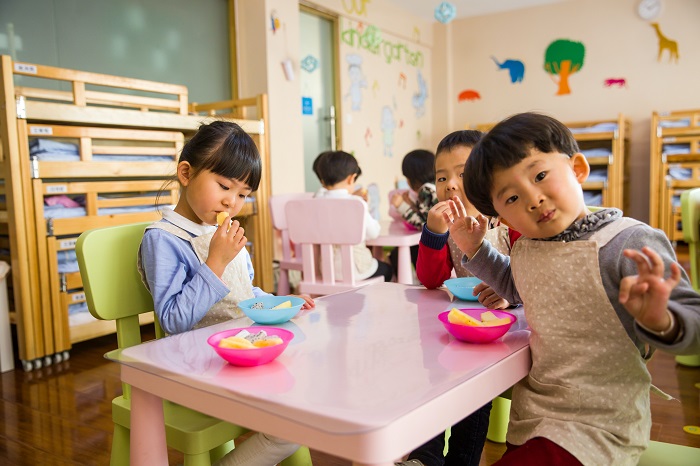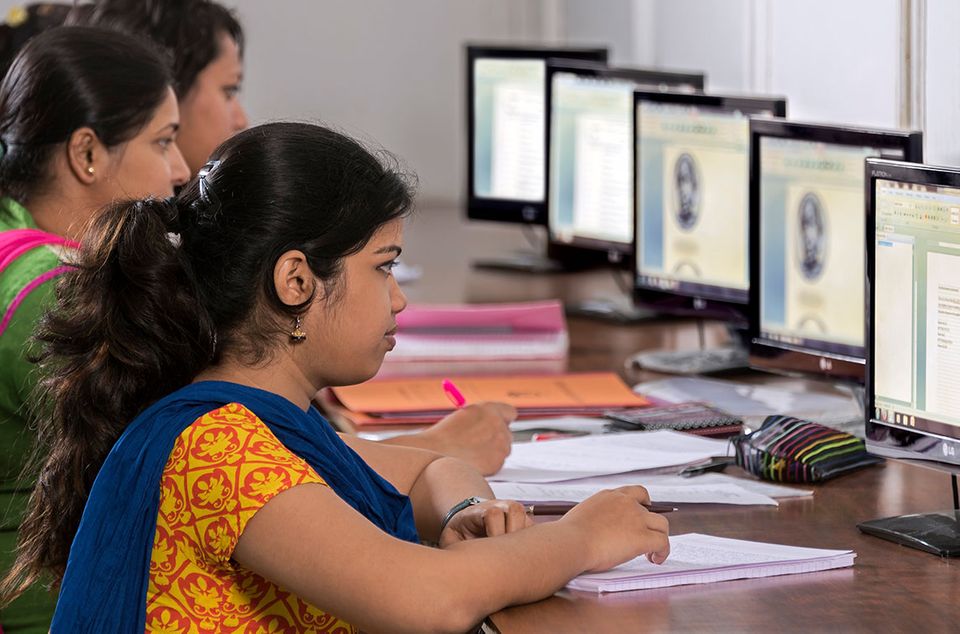Every child requires a planned aesthetic education to help them experience feelings, the feeling and enjoyment of gorgeous things in order to counterbalance our current rationalized world. Because the modern school is striving to build professional skills and knowledge through intellectual activities, but (at the same time) disregarding other aspects of a child’s character (emotions, feelings, etc. ) It is among the main responsibilities of the school’s education for young children and adolescents to build the ability to appreciate art and beauty and, in the course of one’s own inner and external life, to act in conformity with a sense of harmony, proportion and beauty.
Classroom aesthetics can contribute to equity through increasing learning engagement and the quality of instruction (Sinclair 2001). The ways that students view their surroundings shape how they learn. The sensory, felt emotional dimension, also known as the aesthetic dimension plays an important part in determining what is personal or epistemologically relevant for children.
Let’s look at some of the crucial aspects that have to be considered when working on classroom aesthetics.
COLOR
Colour is an extremely effective medium. It can bring feelings of happiness, warmth, and excitement, among a variety of other emotions. Many people have a preferred colour or one that brings memories of the past. Colours can alter the appearance and feel of a room. When people talk about the colour of a room, the first idea that comes to mind is paint. Paint is a fantastic option to transform an atmosphere, but in most institutions, there are numerous challenges to this idea. Cost is likely to be the biggest hurdle, along with approval from the institution’s director’s board. Additionally, there is the issue of time. When should you paint when you have children? There are plenty of methods to transform the appearance of an area with colour which is more easily accessible
- Wall-mounted quilts provide both design and colour and softness
- An art display for children in the room highlights the creativity of children and serves as an excellent way to boost self-esteem.
- The bottles are filled with water coloured crayons, sand and glitter that can add the colour to shelves and other flat surfaces
- Reflectors that have Velcro at the back an exciting and imaginative felt board game
- Flowers can add colour to any space and they are an excellent addition to any colour scheme (they also smell great)
- Toys displayed on shelves that are clear bins can create a bright background that lets children know what they’re picking.
FLOORING
The floor is where we walk. We stroll on it, the ground (something that builders aren’t thinking of) However, do we actually see the floor? Children can, as they’re nearer to the ground than adults. In an institution setting, often, the floor will be tiled, with certain areas carpeted. The tile and carpet generally have a neutral hue that is somewhere in between grey and beige.
- The use of area rugs in specific areas of the room could create intimate gathering areas and also add colour. It creates a comfortable space in the playing area. In a large gathering space, a rug can create a more comfortable place to sit and also create an area for meetings.
- The masking tape that is coloured can be an excellent tool for creating artwork on the ground. With just a bit of imagination and a few hours of practice, many ideas are possible to realize. Make an aeroplane for youngsters to fly in, or even a huge insect to examine. Create a road for scooters and trucks or stepping stones that cross the stream.
CEILING
The ceiling is an enormous expanse of empty space in the majority of rooms. Children also see it as an unattainable height, which can be a source of wonder. A lot of times, children have asked my question “Can you touch the ceiling?” If you can, they are shocked. There are many ways for you to reduce the height to increase the excitement:
- There are many exciting mobiles that are available for purchase, but you can also make your own mobiles. Old CDs can be transformed into sparkling mobiles. Natural objects, like pinecones, can be placed on an experiment table. Children can also create mobiles for their rooms. Make use of your imagination
- Umbrellas hanging from the ceiling make an extremely vibrant addition (with the umbrellas’ cloth removed, they make a fantastic frame to hang a mobile)
- Hanging plants can also reduce the height of your ceiling
NATURE INSIDE
Another option to enhance the indoor space is to bring outside inside. Plants are a simple first step.
- Make large leaf collages to hang on the walls
- You can also upload images of nature
- Make use of mosquito nets (the type that is sewn onto a hoop to be hung on top of the bed) suspended from the ceiling, and then placed around a small table to create a butterfly-friendly habitat. It’s an excellent close-up opportunity for children to view butterflies. After a few days, let the butterflies go and capture new ones. Mosquito nets also make an intimate space for peaceful play. Set food and water (cut fresh fruit works great) on the tables and then put butterflies that you and your children capture
- Ant farms or worm farms are an additional fantastic idea
- Pets in the classroom (that you feel comfortable with) can improve the atmosphere and aid children in becoming more responsible
- Use Wooden Classroom Desk to create a natural feel in the classroom
SOFT SPOTS
You can create many soft places where students (and the teachers) can sit and read a book or play.
- Design an entire space in your classroom that is called”the “Soft Spot.” The students created a list of ideas and voted for the name for the area. It is called the “Soft Spot” and contains a couch (adult-sized love seat) and a large rocking chair, a tiny table with chairs that are child-sized as well as books, games as well as puppets and pillows.
- There is also the “Rest Stop” in our room for two kids. There’s also a love chair and books in the area.
- In the living room, we have pillows that the kids can unwind with, we also have a cushion bed that is a huge wooden frame box that has pillows on the floor.
Soft spots are great places to read with kids or simply talk to them. Children who are part of a group for long periods of the day will need to have some quiet time. It isn’t always easy to find in a group environment So anyway in which you can alter the atmosphere to create quieter spaces can be a huge benefit for young children.
BATHROOM
What do I have to have to say regarding the restroom? I hope it’s useful and kid-sized and is an important element of a child’s daily life. We’ve tried to make the bathroom an enjoyable visual space. There are not many things you can do with the toilets and sinks. Affixing posters or framed artwork is a great option to create a pleasing design. We make sure to change our posters at least once a year to keep the excitement. For those with children still learning how to make use of the toilet, a bit of interesting artwork displayed on the walls can assist the child in staying longer and help to encourage achievement.
OUTSIDE
The play area can be a beautiful place.
- Flowers and plants are always a beautiful feature of any outdoor space.
- Windsocks, sculptures, flags and fountains on the playground will entice and enthral youngsters.
- Wind chimes can be an amazing way to improve the aesthetics of any room (indoors or outside).
- Natural wood climbers, playhouses or tree houses provide new possibilities for children’s play and encourage natural beauty.
ODDS AND ENDS
In our homes, we can find many ornamental touches. In our classrooms, these may be utilized:
- Bottles with colours along the edge of a shelf
- Baskets that are decorative (for display and also to store toys)
- Lamps (where it is possible) to replace the harsh fluorescent lighting
- Strings of lights that are decorative
- Mirrors that are decorative for children to look at themselves
- Books displayed with covers visible.
- Any other ideas you come up with to improve the setting of the classroom. Imagine that the school as being an extension of the child’s home (and yours too).
FLEXIBILITY
In order to enhance the look of your classroom, don’t feel intimidated to play. Test new methods If they don’t succeed, try something else. Get the kids’ ideas Let them know that you appreciate their opinion. Engage parents and you’ll be amazed at the things your family has laying around at home that would make a great classroom. Explore different arrangements for your classroom to let the room work in terms of the flow of traffic and changes. A room that is well-organized can dramatically reduce the noise level as well as indoor running. A variety of issues with discipline can be solved with the arrangement of rooms.
Remember that you and your children spend a significant portion of your time in the classroom. Make it as inviting and comfortable as possible. Make changes and improvements that you’re confident with and can take your lessons from failures. The most important thing is to enjoy your surroundings. A stimulating and relaxing classroom is crucial to every child’s education. A classroom that is able to hold children’s attention is the first step towards the next stage of their education.



